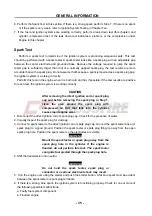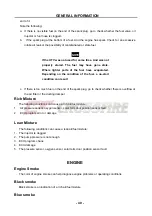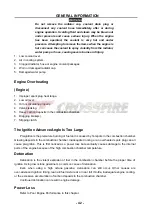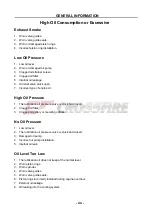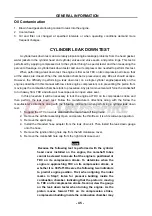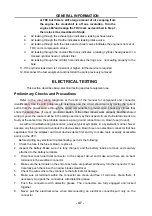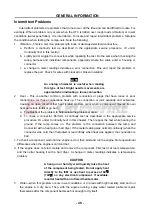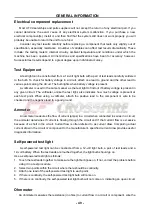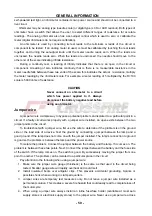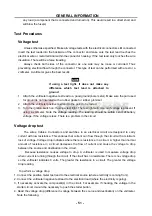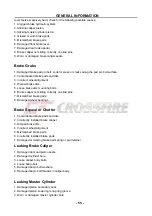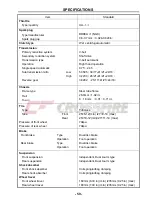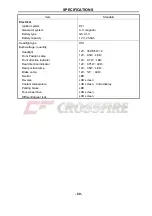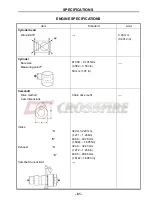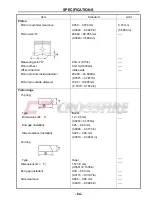
GENERAL INFORMATION
- 49 -
Electrical component replacement
Most UTV dealerships and parts suppliers will not accept the return of any electrical part. If you
cannot determine the exact cause of any electrical system malfunction. If you purchase a new
electrical component(s), install it, and then find that the system still does not work properly, you will
probably be unable to return the unit for a refund.
Consider any test results carefully before replacing a component that teats only slightly out of
specification, especially resistance. A number of variables can affect test results dramatically. These
include: the testing meter’s internal circuitry, ambient temperature and conditions under which the
machine has been operated. All instructions and specifications have been for accuracy: however.
Successful test results depend to a great degree upon individual accuracy.
Test Equipment
A test light can be constructed from a 12-volt light bulb with a pair of test leads carefully soldered
to the bulb. To check for battery voltage in a circuit, attach one lead to ground and the other lead to
various points along the circuit. The bulb lights when battery voltage is present.
A voltmeter is used in the same manner as the test light to find out if battery voltage is present in
any given circuit. The voltmeter, unlike the test light, also indicates how much voltage is present at
each test point. When using a voltmeter, attach the positive lead to the component or wire to be
checked and the negative lead to a good ground.
Ammeter
An ammeter measures the flow of current (amps) in a circuit when connected in series in a circuit,
the ammeter determines if current is flowing through the circuit and if that current flow is excessive
because of a short in the circuit. Current flow is often referred to as current draw. Comparing actual
current draw in the circuit or component to the manufacturer’s specified current draw provides useful
diagnostic information.
Self-powered test light
A self-powered test light can be constructed from a 12-volt light bulb, a pair of test leads and a
12-volt battery. When the test leads are touched together, the light bulb should go on.
Use a self-powered test light as follows:
1. Touch the test leads together to make sure the light bulb goes on. If not, correct the problem before
using it in a test procedure.
2. Select two points within the circuit where there should be continuity.
3. Attach one lead of the self-powered test light to each point.
4. If there is continuity, the self-powered test light bulb will come on.
5. If there is on continuity, the self-powered test light bulb will not come on, indicating an open circuit.
Ohmmeter
An ohmmeter measures the resistance (in ohms) to current flow in a circuit or component. Like the

